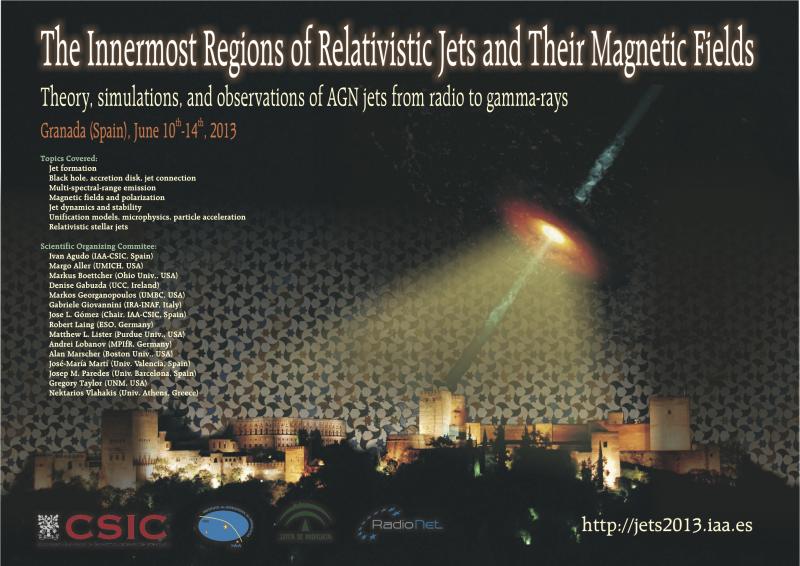The Innermost Regions of Relativistic Jets and Their Magnetic Fields. Granada (Spain). June 10th-14th, 2013.
Weidinger, Matthias
Hadronic Modeling of AGN Variability.
Author list: Matthias Weidinger, Felix Spanier
The first peak in the typical blazar spectrum, with its two distinct humps, is well explained by doppler-enhanced synchrotron radiation of electrons within the relativistic jet. However, the mechanism responsible for the gamma-ray emission is still under debate. Compton up-scattering of internal (jet) photons works well for many, but - by far - not for all blazars. Either external radiation fields or non-thermal protons within the jet need to be present to explain the broadband emission of e.g. flat spectrum radio quasars. A self-consistent and time-dependent hybrid emission model is introduced. Depending on the physical parameters within the jet, especially its magnetic field, protons can also be accelerated up to very high energies, making them relevant emitters in the gamma-rays. The full time-dependency of the underlying non-linear kinetic equations, including acceleration and all relevant radiation mechanisms, is solved numerically. Short term variability of blazars can hence be exploited to reveal the relevant emitting processes by identifying typical patterns in the interband light curves. We suggest flaring scenarios for the blazar 1 ES 1011+496, which may be discovered combining observations of Swift, Fermi and Air-Cherenkov telescopes.




